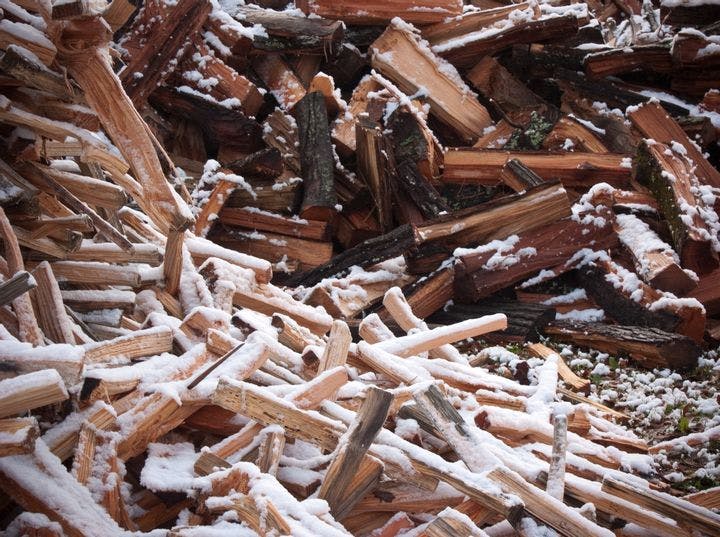Fall 2008
Colonial Warming
– The Wilson Quarterly
America has been dealing with energy crises for a long time. Like the one in the winter of 1637...
Think the energy crisis of the 1970s was America’s first? Think again. So lacking in home heating fuel were settlers in Boston in 1637 that they considered abandoning the city.
Nor were the next decades well fueled. A century after the Boston crisis, Benjamin Franklin noted that “wood, our common fewel . . . must now be fetch’d near 100 miles to some towns.” And by the time the British torched the White House in 1814, the want of wood during the winter constituted a real emergency in many northern towns and cities, especially for the poor, writes Sean Patrick Adams, a historian at the University of Florida.
Firewood merchants shut down for weeks at a time when heavy snowfall blocked the roads and frozen rivers halted barge traffic. Prosperous individuals could stockpile fuel, but most urban residents bought wood on the spot market, and it disappeared when they needed it most. Civic and religious leaders founded fuel charities, but their supplies were limited and their outreach was targeted primarily at the meritorious poor. The Society for the Prevention of Pauperism preached “sober, industrious, and economical” behavior in return for aid. Philadelphia’s Fuel Savings Society sold firewood at artificially low prices to poor depositors who planned ahead by contributing 12 cents a week during the summer. The Pennsylvania Hospital almshouse used a fuel crisis near the turn of the 19th century to demonstrate a new-fangled furnace that consumed only a third of the firewood required by the traditional open fireplace.
America's first energy crisis was in 1637, when a lack of wood almost forced early Boston settlers to abandon the city.
But the scarcity of firewood coincided with the development of a new industry starting in the early 1800s: coal. Coal had been trickling into American ports from Britain for some time, but the discovery of deposits of anthracite coal relatively close to some of the nation’s foremost cities brought new opportunities. Huge capital expenditures were laid out to dredge waterways and dig canals to get coal to market. And the need to pay off investors spurred the coal barons to ramp up marketing.
At first, consumers balked. Anthracite’s high ignition temperature made it hard to burn in the fireplaces of the time. Jokes abounded about merchants passing off rocks as fuel when they were fit only for paving roads and of anthracite being used to extinguish a fire in Philadelphia in 1803. Using state-of-the-art tools that stoked wood fires—the poker and bellows—simply quenched coal fires.
Once the industry infrastructure was in place, by the late 1820s, coal was cheaper than wood. But burning it required grates, which cost as much as $60. Furthermore, coal worked best in furnaces, which cost up to $200. What better way to broaden the market for coal than to demonstrate how beneficial it would be as a heat source for the homes of the poor?
Philanthropists once again stepped up, offering subsidized grates and cheap stoves. Coal took off in the 1840s, Adams writes, when it became relatively cheap, plentiful, and easy to burn in the heating units of ordinary houses. The energy crisis ended not when the fancy new furnace technology of the rich trickled down to the hearths of the workers, but by the equally effective, but less dramatic, provision of cheap loaner stoves to the poor by charities funded, in part, by the nation’s new energy magnates.
* * *
THE SOURCE: “Warming the Poor and Growing Consumers: Fuel Philanthropy in the Early Republic’s Urban North” by Sean Patrick Adams, in The Journal of American History, June 2008.
Photo courtesy of Flickr/Maggie McCain
